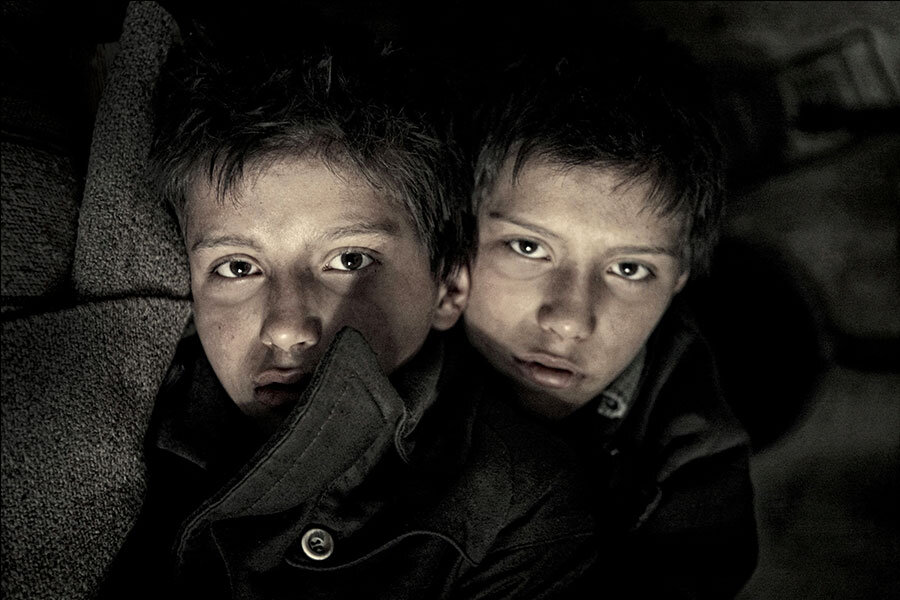'The Notebook' is alternately powerful and perplexing
Loading...
Set in the waning days of World War II, “The Notebook,” directed by Hungarian János Szász, is based on the celebrated French-language bestseller by Agota Kristof about 13-year-old twin brothers forced to take shelter with their unconsoling peasant grandmother in her countryside shack. The boys, played by László and András Gyémánt, are unnamed in the film (though not in the novel), as is also true of practically everybody else, and the setting, though presumably Hungary, is equally undefined. Szász is trying for a timeless effect, and, for him, this means going light on the specifics.
Alternately powerful and perplexing, “The Notebook” plays out as an allegory that might have been lifted from a particularly grim Grimm’s fairy tale. When the film opens, the boys’ soldier father (Ulrich Matthes), heading to the front, counsels his sons to write down their daily experiences in a notebook while he’s gone. Because twins are conspicuous – a danger in wartime – he also tries to convince his wife (Gyöngyvér Bognár) to separate the boys. Instead, she delivers them to the crone mother she hasn’t spoken to in 20 years and who didn’t even know she had grandchildren.
Not that it would have mattered. This knobby old woman refers to the boys only as “bastards.” She, in turn, is called “the witch” by the local villagers, who believe, probably not without reason, that she once poisoned her husband. The old woman beats the boys, locks them out, and makes them work for every slurp of soup she places before them.
The boys quickly size up their predicament. To survive this woman and the wider war, they will have to steel themselves to endure pain. They undergo a self-made regimen – hitting themselves, starving themselves, burning the photos of their mother – in order to blank out their humanity. They befriend a local girl, a thief, and their survivalist escapades become increasingly harrowing. Murder and vengeance are executed without a twinge of remorse.
Szász wants to demonstrate how war’s horrors leave us as soulless husks. But he doesn’t show us enough of what these boys were like before they turned themselves into zombies. The two young actors, new to the profession, are blank-faced throughout. We are left with the unintended implication that they were husks from the get-go. This deranges the movie’s import.
At its best, the movie summons up the nightmarishness of another novel, Kosinski’s “The Painted Bird,” but it’s highly schematic. The village is peopled almost exclusively by worst-case specimens: The local priest is scurvy; the townsfolk are vicious. It’s not enough that the encamped Nazi officer is a Nazi – he’s also sexually aberrant. A movie about the inhumanity that war engenders should not remove from the scene all traces of humanity, or else what is there to compare? In the name of unblinking realism, Szász overdoes the allegory. There are no sacrificial gestures here, no heroism, no tears. He comes on as truth-teller, but he’s only telling half the truth. Grade: B- (Rated R for disturbing violent and sexual content, nudity, and language.)







